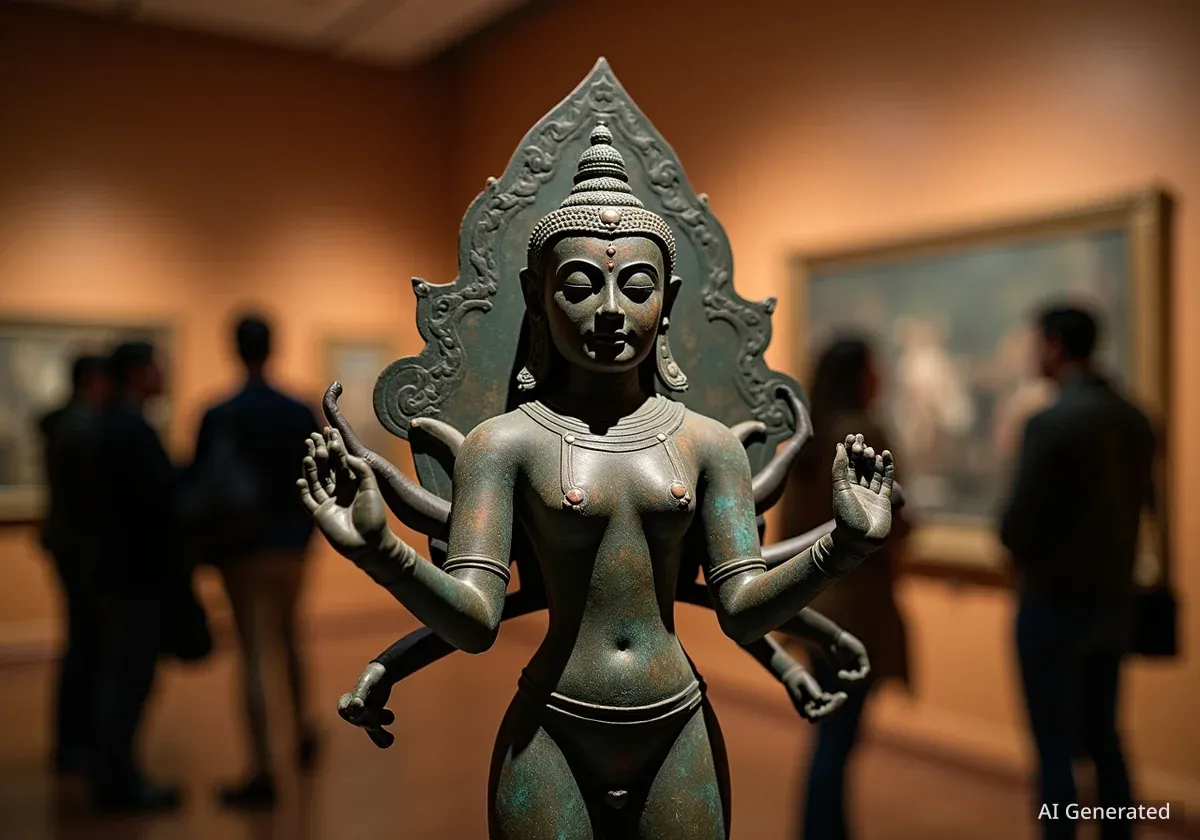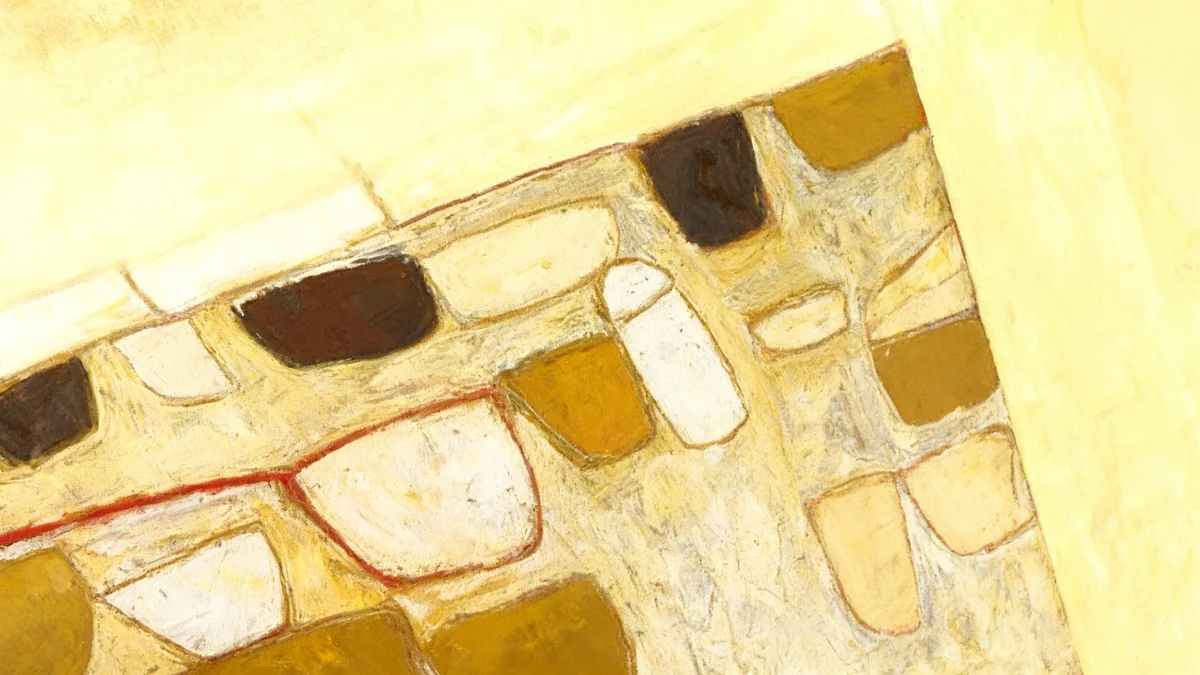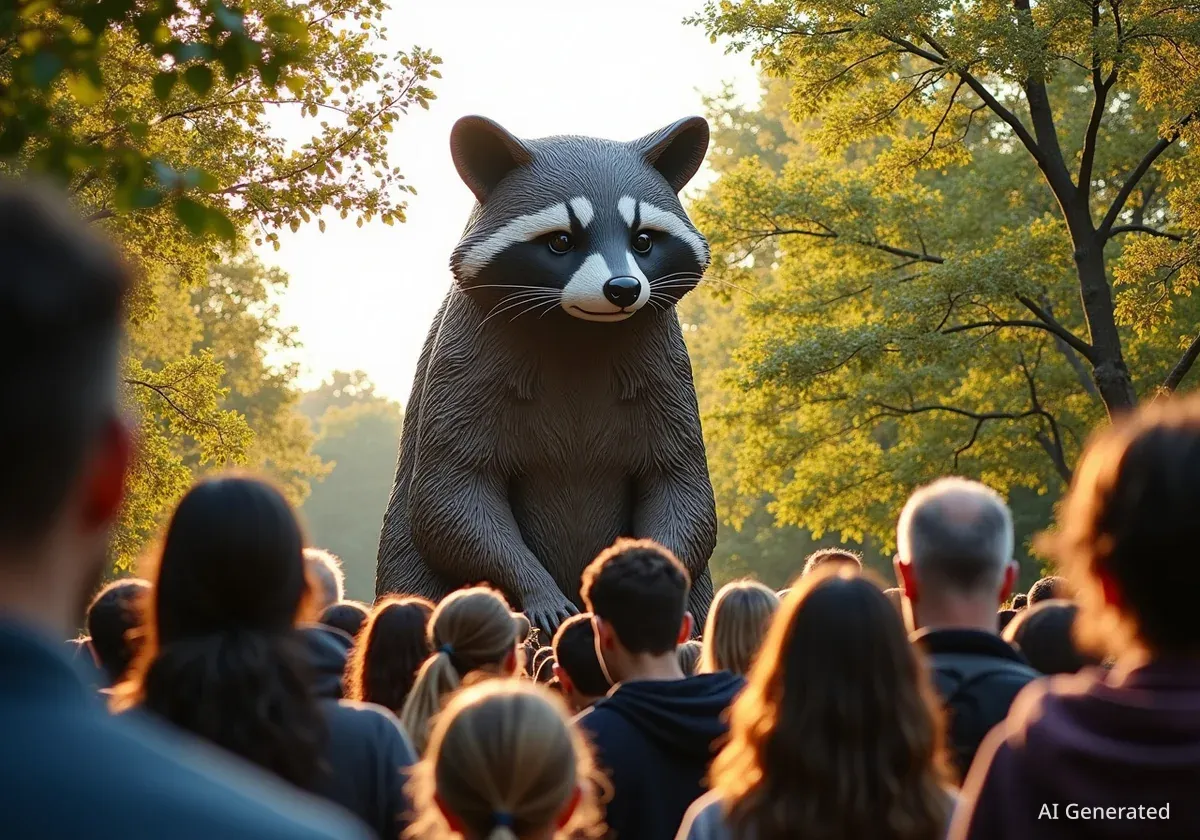A significant exhibition, "Royal Bronzes: Cambodian Art of the Divine," has opened at the Minneapolis Institute of Art, featuring over 200 artifacts from the Khmer Empire. This collection offers a rare glimpse into bronze sculptures crafted between 802 and 1431 AD, providing deep cultural insights into Cambodia's rich heritage.
Key Takeaways
- Over 200 bronze objects from the Khmer Empire are on display.
- The exhibition includes the West Mebon Reclining Vishnu, restored over a decade.
- It highlights Cambodian bronze casting technology and cultural significance.
- Many pieces were loaned from the Guimet Museum and the National Museum of Cambodia.
- The exhibition addresses the impact of past looting and ongoing restoration efforts.
A Sacred Journey to Minneapolis
The exhibition's opening was marked by a special blessing ceremony. Orange-clad Cambodian monks and women wearing traditional red-and-blue sashes, symbolizing the national flag, welcomed a one-ton bronze statue of Vishnu. These participants traveled from the Watt Munisotaram Pagoda in Farmington, underscoring the spiritual importance of these artifacts to the Cambodian community.
Chhay Visoth, director of the National Museum of Cambodia, emphasized the unique nature of this display. "This is the first time in the U.S., and especially with this connection of the fragments to the body," Visoth stated. He added, "Commonly you see only the body, but this is a great chunk, the first time we show the body and the bust together." This specific detail highlights the meticulous restoration work involved.
Exhibition at a Glance
- Number of Objects: More than 200
- Historical Period: Khmer Empire (802–1431 AD)
- Key Piece: West Mebon Reclining Vishnu
- Collaborators: Guimet Museum of Asian Arts (France), National Museum of Cambodia
Connecting with Ancestral Souls
For many Cambodians, these objects are more than just art. Visoth articulated this sentiment, saying, "We can see the value of these objects is important because we can feel that this is our ancestors’ souls." This perspective underscores the deep spiritual and historical connection the community holds with these ancient bronzes.
The exhibition is the result of a partnership between the Minneapolis Institute of Art, the Guimet Museum of Asian Arts in France, and the National Museum of Cambodia. The Guimet Museum contributed 50 pieces, while an additional 126 objects came directly from the National Museum of Cambodia.
Khmer Empire Overview
The Khmer Empire was a powerful Hindu-Buddhist empire in Southeast Asia, lasting from 802 AD to 1431 AD. Its capital was Angkor, known for its magnificent temples like Angkor Wat. The empire's art and architecture, particularly its bronze sculptures, reflect a sophisticated understanding of metallurgy and religious iconography.
Decades of Restoration and Research
A central piece of the exhibition is the West Mebon Reclining Vishnu. This monumental bronze underwent a decade of scientific research and restoration at the Louvre Laboratory. Pierre Baptiste, head curator at the Guimet, highlighted the exhibition's focus on the technical aspects of these creations.
"The idea here was to provide a closer view of the specific technology of bronze casting in Cambodia," Baptiste explained.
The intricate casting techniques used by Khmer artisans are a key theme. The exhibition aims to educate visitors on the advanced metallurgical skills present in ancient Cambodia, moving beyond just the aesthetic appeal of the sculptures.
Personal Connections and Historical Trauma
The exhibition resonates deeply with the Cambodian diaspora in the United States. Soklynna Som of Farmington, who participated in the blessing ceremony, expressed her profound connection. "This is my privilege to see it," she said, adding, "I felt like its spirit is still alive." Som fled Cambodia at age six during the Khmer Rouge regime, a period from 1975 to 1979 where more than two million people died.
Her journey included spending ten years in a refugee camp in Thailand before relocating to the United States. Minnesota is home to nearly 12,000 Cambodians, with three-quarters residing in the Twin Cities. Approximately 158,000 Cambodians arrived in the U.S. as refugees after 1975, seeking safety and a new beginning.
Addressing the Legacy of Looting
The historical context of these bronzes also includes the issue of looting. During the Khmer Rouge dictatorship, Cambodia's cultural heritage suffered immense damage as looters trafficked artworks illegally, selling them to Western museums and private collectors. The exhibition directly addresses this complex history.
Notably, two bronzes in the show were gifted by disgraced British art dealer Douglas Latchford: the ninth-century bronze Bodhisattva Lokeshvara and the 12th-13th century Figurehead Featuring Garuda. Their inclusion highlights ongoing efforts to acknowledge and rectify past injustices in art acquisition.
Exhibition Structure and Future Hope
The exhibition is organized into five distinct sections, guiding visitors through the evolution of Cambodian bronze art:
- Origins of copper metallurgy
- Casting for the king
- Honoring the gods
- The fall of Angkor and the rise of Buddhism
- The unearthing of the reclining Vishnu in 1936 by the French, following local guidance
The Anantashayana Vishnu, a highlight, was restored through collaborative French and Cambodian efforts. Visoth expressed a strong desire for the Vishnu to remain in Cambodia permanently after the exhibition. The installation at the Minneapolis Institute of Art features a special mount, designed by the French and Cambodian team, that creates the illusion of Vishnu floating on water, representing cosmic waters rather than a simple pedestal.
The exhibition is open to the public at the Minneapolis Institute of Art, located at 2400 3rd Av. S. Hours are 10 a.m.-5 p.m. Tuesday, Wednesday, Friday-Sunday, and 10 a.m.-9 p.m. on Thursdays.




